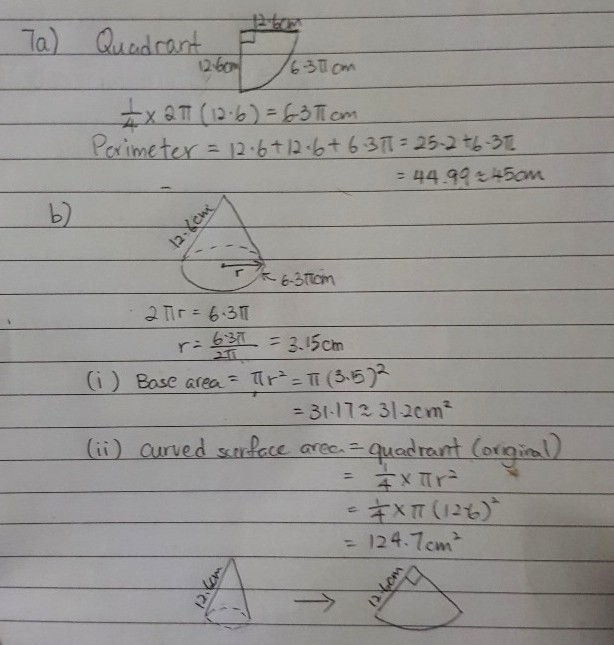Jack's answer to John mered's Secondary 2 Maths Singapore question.
done
{{ upvoteCount }} Upvotes
clear
{{ downvoteCount * -1 }} Downvotes

It's easier if you draw it out.
Quadrant=1/4 of a circle. For part b(i), imgine you roll up the quadrant into a cone, the circumference of the base is the curve part of quadrant from part a. Use the circumference to find the base radius of the cone, and from there use πr^2 to find base area. For part b(ii), remember that the cone is actually made from the quadrant, so their surface area is the same.
Quadrant=1/4 of a circle. For part b(i), imgine you roll up the quadrant into a cone, the circumference of the base is the curve part of quadrant from part a. Use the circumference to find the base radius of the cone, and from there use πr^2 to find base area. For part b(ii), remember that the cone is actually made from the quadrant, so their surface area is the same.
Date Posted:
4 years ago

